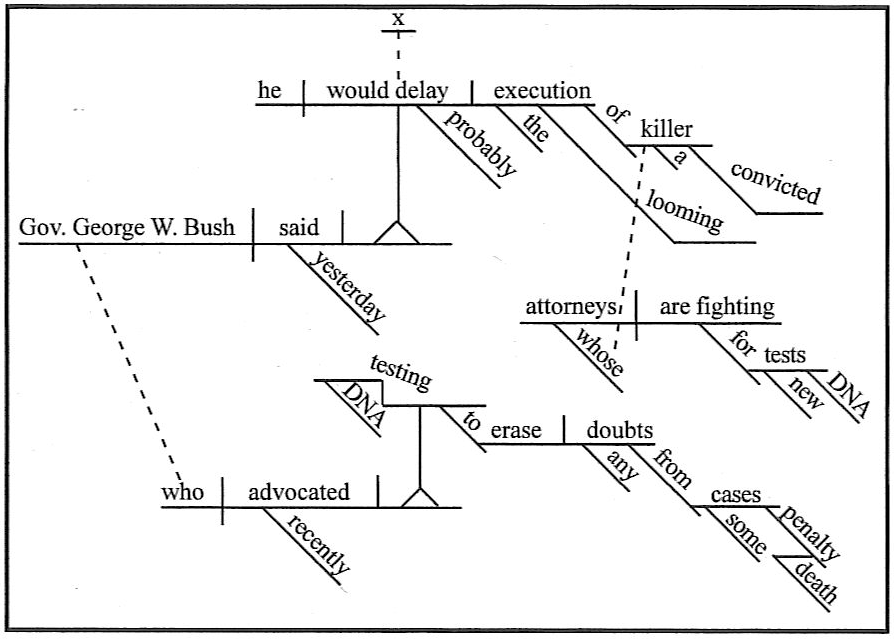Sentence Diagrams
Sentence 4
Gov. George W. Bush, who recently
advocated DNA testing to "erase any doubts" from some death
penalty cases, said yesterday he would probably delay the looming
execution of a convicted killer whose attorneys are fighting for new DNA
tests.
- Mark Babineck, Associated Press (published on June 1, 2000, in
Louisville, KY, in The Courier-Journal, page A4)
|
| Lesson 4: Pronouns take the place of nouns.
There are several different kinds of pronouns, two of which are personal
pronouns and relative pronouns. Subject forms of the personal
pronouns are I, you, he, she, it, we, and they; object
forms are me, you, him, her, it, us, and them; and
possessive forms are my, mine, your, yours, her, hers, his, its, our,
ours, their, and theirs. The possessive forms function as
adjectives and are diagrammed as such (more about this when we discuss
modifiers). There are only five common forms of the relative pronoun in
English: who, whom, whose, which, and that. A relative
pronoun has an antecedent in its sentence, that is, a noun or pronoun
that precedes it in the sentence and to which it refers. In Mr.
Babineck's sentence, the relative pronoun who has as its
antecedent Gov. George W. Bush, while the antecedent of the
relative pronoun whose is killer. In a sentence diagram, a
broken line is drawn between a relative pronoun and its antecedent. |
